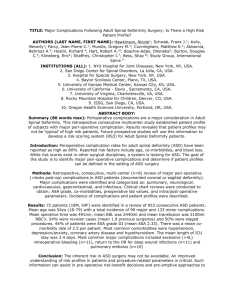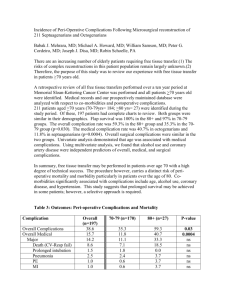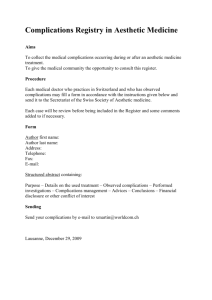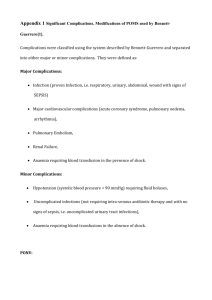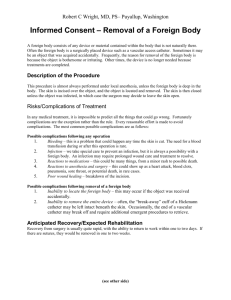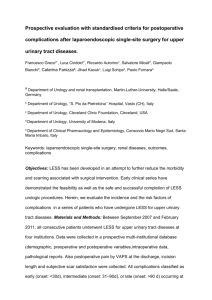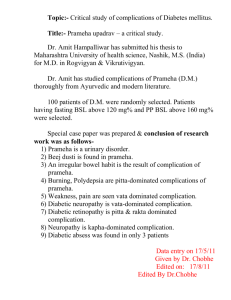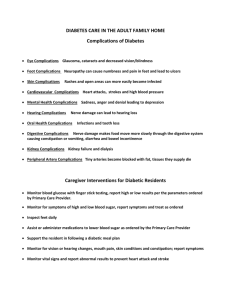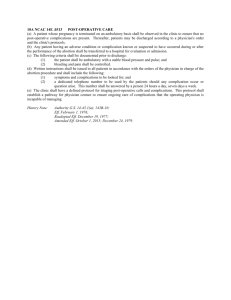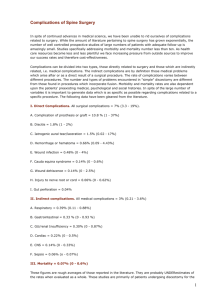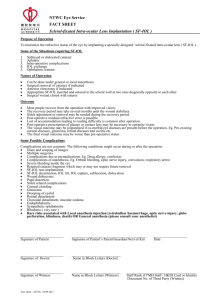Risk Factors for Major Periop Complications in Adult Spinal
advertisement
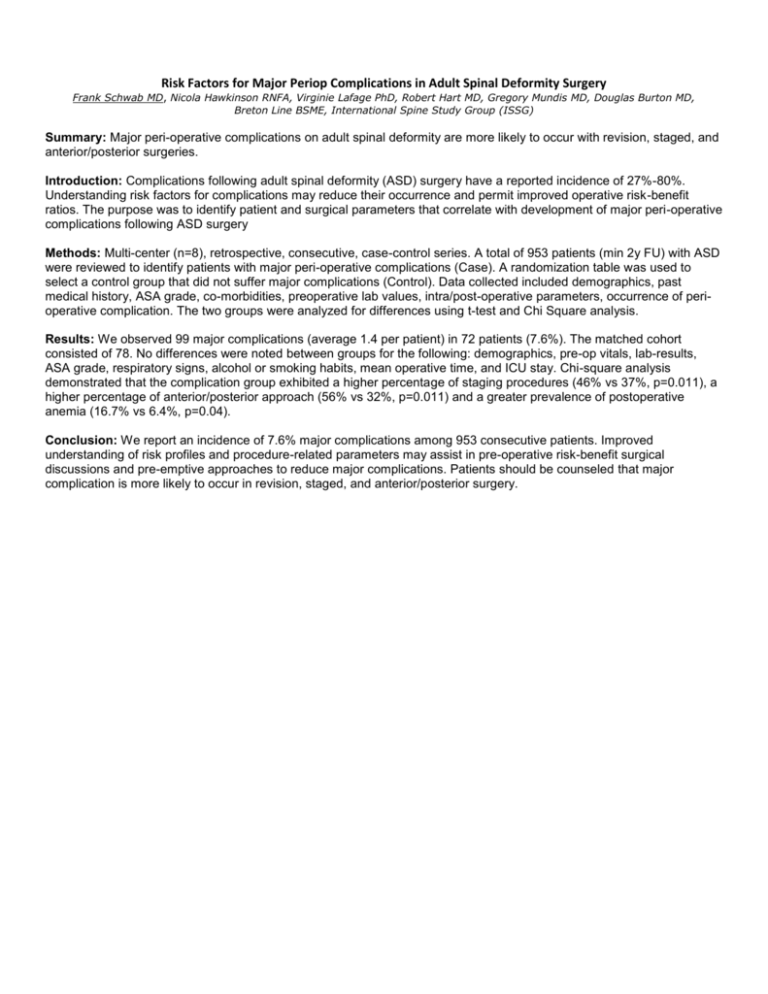
Risk Factors for Major Periop Complications in Adult Spinal Deformity Surgery Frank Schwab MD, Nicola Hawkinson RNFA, Virginie Lafage PhD, Robert Hart MD, Gregory Mundis MD, Douglas Burton MD, Breton Line BSME, International Spine Study Group (ISSG) Summary: Major peri-operative complications on adult spinal deformity are more likely to occur with revision, staged, and anterior/posterior surgeries. Introduction: Complications following adult spinal deformity (ASD) surgery have a reported incidence of 27%-80%. Understanding risk factors for complications may reduce their occurrence and permit improved operative risk-benefit ratios. The purpose was to identify patient and surgical parameters that correlate with development of major peri-operative complications following ASD surgery Methods: Multi-center (n=8), retrospective, consecutive, case-control series. A total of 953 patients (min 2y FU) with ASD were reviewed to identify patients with major peri-operative complications (Case). A randomization table was used to select a control group that did not suffer major complications (Control). Data collected included demographics, past medical history, ASA grade, co-morbidities, preoperative lab values, intra/post-operative parameters, occurrence of perioperative complication. The two groups were analyzed for differences using t-test and Chi Square analysis. Results: We observed 99 major complications (average 1.4 per patient) in 72 patients (7.6%). The matched cohort consisted of 78. No differences were noted between groups for the following: demographics, pre-op vitals, lab-results, ASA grade, respiratory signs, alcohol or smoking habits, mean operative time, and ICU stay. Chi-square analysis demonstrated that the complication group exhibited a higher percentage of staging procedures (46% vs 37%, p=0.011), a higher percentage of anterior/posterior approach (56% vs 32%, p=0.011) and a greater prevalence of postoperative anemia (16.7% vs 6.4%, p=0.04). Conclusion: We report an incidence of 7.6% major complications among 953 consecutive patients. Improved understanding of risk profiles and procedure-related parameters may assist in pre-operative risk-benefit surgical discussions and pre-emptive approaches to reduce major complications. Patients should be counseled that major complication is more likely to occur in revision, staged, and anterior/posterior surgery.
